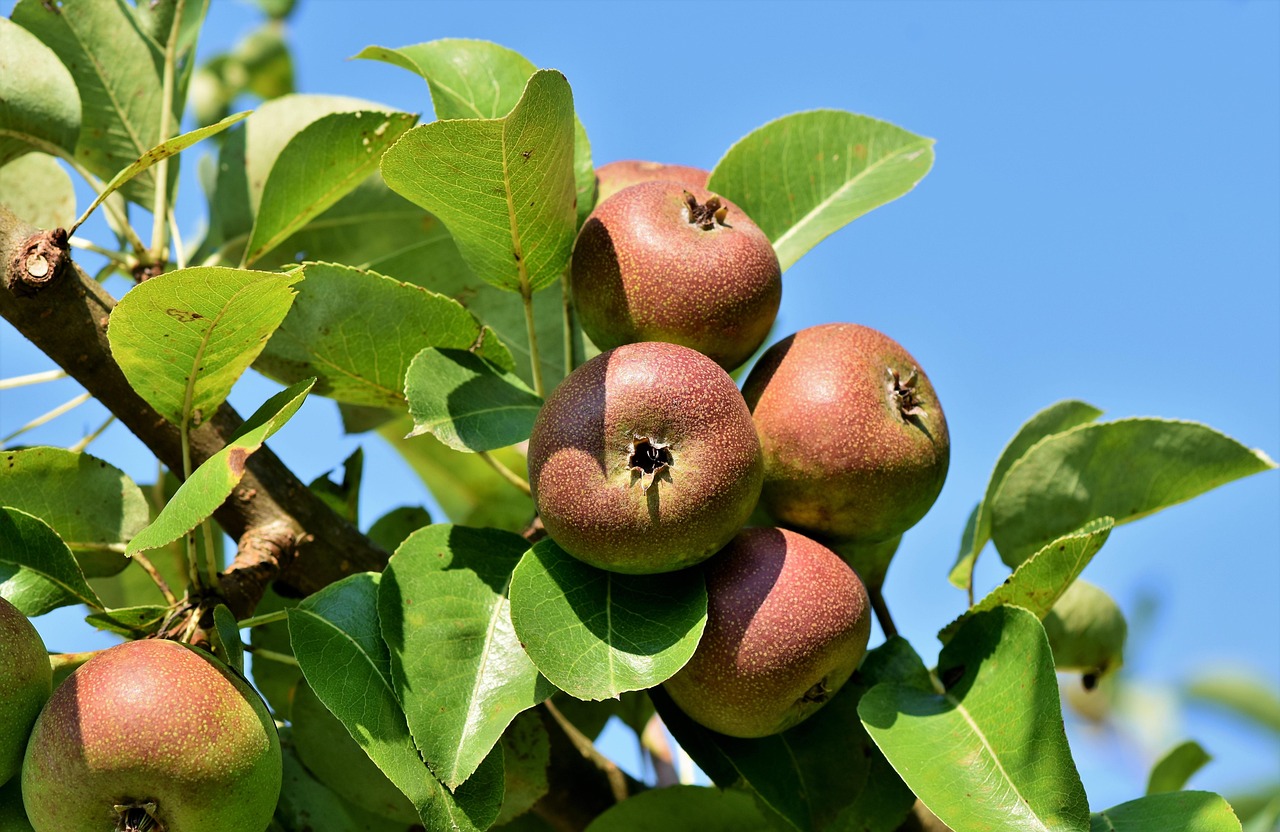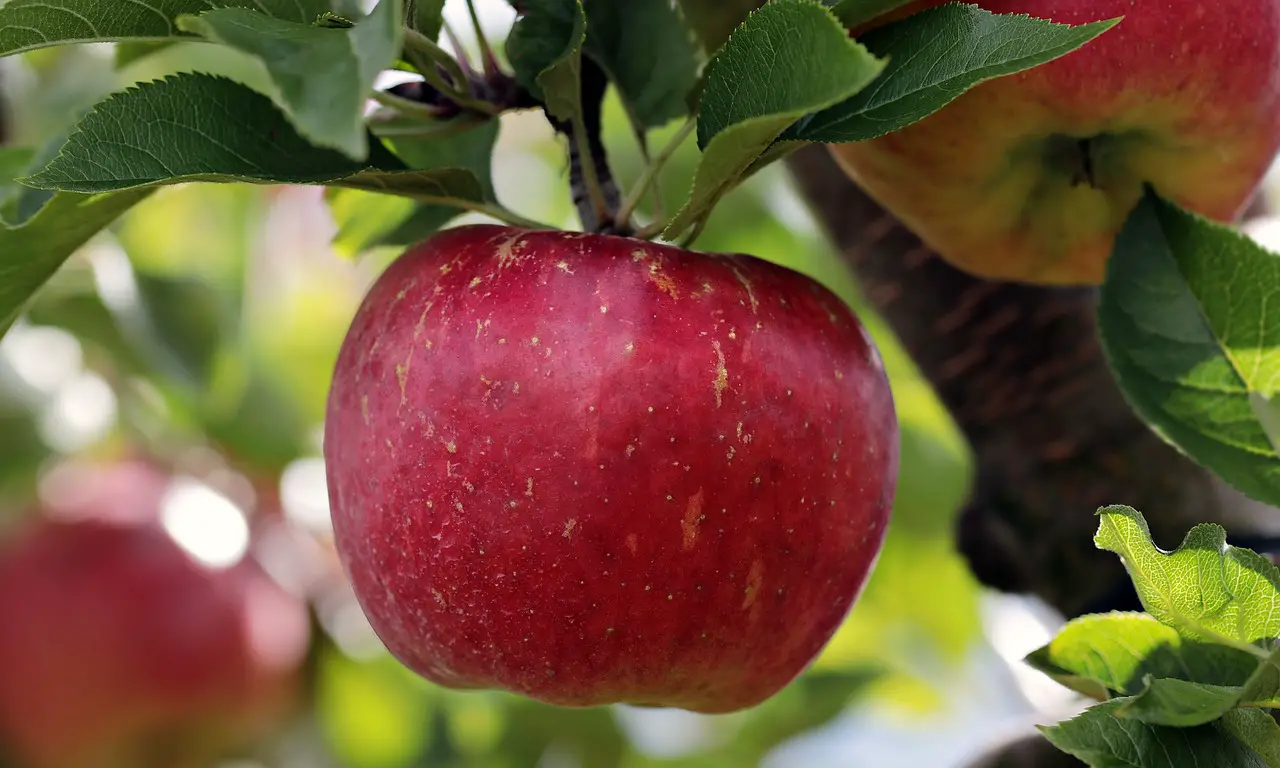Dwarf apple tree pruning is essential for promoting healthy growth and maximizing fruit production in small garden spaces. Regular pruning helps maintain the tree’s size, encourages better air circulation, and increases sunlight exposure to the inner branches.
Dwarf apple trees are a popular choice for gardeners with limited space. Their compact size makes them ideal for small yards, patios, or even container gardening. These trees typically reach a height of 6 to 10 feet, allowing for easy maintenance and harvesting. However, proper care is essential to ensure that they thrive and produce abundant fruit.

Pruning is a vital part of apple tree care. It helps shape the tree, removes dead or diseased wood, and encourages new growth. For small garden spaces, understanding the right techniques and timing for pruning dwarf apple trees is crucial for achieving the best results.
Understanding Dwarf Apple Trees
Dwarf apple trees are cultivated to be smaller than standard apple trees through specific rootstock and breeding techniques. This allows them to fit into smaller areas while still providing fruit. Here are some key features of dwarf apple trees:
- Size: Typically range from 6 to 10 feet in height.
- Fruit Production: Can produce fruit in as little as two to three years after planting.
- Varieties: Available in many apple varieties, including popular choices like Honeycrisp and Fuji.
When selecting a dwarf apple tree for your garden, consider the variety’s growing requirements and climate compatibility. Each type may have specific needs regarding sunlight, soil type, and watering. Additionally, keep in mind that pruning will vary slightly depending on the type of tree you choose.

The Importance of Pruning
Pruning plays several important roles in the health and productivity of dwarf apple trees. Here are some benefits of regular pruning:
- Improves Air Circulation: Removing excess branches allows air to circulate, reducing the risk of fungal diseases.
- Enhances Sunlight Exposure: Thinning out branches ensures that all parts of the tree receive adequate sunlight, promoting even fruit ripening.
- Shapes the Tree: Pruning helps maintain a manageable size and shape for easier harvesting.
- Encourages New Growth: Cutting back older wood stimulates new growth, which can lead to more fruitful branches.
Understanding when and how to prune your dwarf apple tree is just as crucial as the act itself. Timing can significantly affect how well your tree responds to pruning efforts.
When to Prune Dwarf Apple Trees
The ideal time to prune dwarf apple trees is during their dormant season, typically in late winter or early spring before new growth begins. This timing minimizes stress on the tree and enhances its recovery from pruning. Pruning during dormancy also allows for better visibility of the tree’s structure, making it easier to identify which branches need attention.

However, light pruning can be done in the summer months after fruiting has occurred. This can help manage the size of the tree and remove any dead or diseased branches that may have developed during the growing season.
Pruning Techniques for Dwarf Apple Trees
There are several techniques that you can use when pruning dwarf apple trees. Each technique serves a different purpose and can help achieve specific goals in terms of tree health and fruit production. Here are some common methods:
- Thinning: This involves selectively removing branches to improve airflow and sunlight penetration. Focus on removing branches that cross each other or grow inward.
- Heading Back: This technique consists of cutting back the tips of branches to encourage bushier growth. It is particularly useful for managing size.
- Removal of Dead or Diseased Wood: Always remove any dead or diseased branches as soon as you notice them to prevent the spread of disease.
If you’re unsure about how much to prune, a good rule of thumb is to start conservatively. It’s better to make smaller cuts than to remove too much at once, which can stress the tree and impact its health.

Tools Needed for Pruning
Having the right tools makes pruning easier and more effective. Here are some essential tools for pruning dwarf apple trees:
| Tool | Description |
|---|---|
| Hand Pruners | Ideal for cutting small branches and stems. |
| Loppers | Used for larger branches that are too thick for hand pruners. |
| Saw | A small pruning saw is useful for removing larger limbs. |
| Gloves | Protect your hands while working with branches. |
With these tools on hand, you will be better equipped to maintain your dwarf apple tree effectively. Proper pruning will lead to healthier trees and more fruitful harvests in your small garden space.
Pruning Techniques for Different Growth Stages
Understanding the growth stages of dwarf apple trees is essential for effective pruning. Each stage requires specific techniques to promote healthy development and fruit production. Here are the primary growth stages and the corresponding pruning techniques:
1. Young Trees (1 to 3 years)
During the early years, the focus should be on establishing a strong structure. Proper pruning at this stage sets the foundation for future growth. Consider these techniques:
- Initial Shaping: When the tree is first planted, prune to create a central leader. This means selecting one strong branch to be the main trunk.
- Removing Competing Branches: Eliminate any branches that compete with the central leader. This encourages upward growth and a strong framework.
- Encouraging Lateral Growth: Trim back some of the side branches to encourage lateral growth, which helps create a bushier tree.
2. Adolescent Trees (4 to 6 years)
As your dwarf apple tree matures, it’s time to refine its shape and promote fruiting. Use these techniques:
- Thinning Out: Remove crowded branches to improve air circulation and sunlight exposure. This will help prevent diseases and promote even fruit ripening.
- Shortening Long Shoots: Cut back long shoots to encourage branching. This will help create a more compact tree structure.
- Focus on Fruit-bearing Wood: Prune to promote fruit-bearing spurs on older wood, ensuring that you maintain enough young wood for future growth.
3. Mature Trees (7 years and older)
Mature dwarf apple trees require maintenance to ensure continued health and productivity. Here are important techniques for this stage:
- Renewal Pruning: Remove older, non-productive branches to make way for new growth. This stimulates fresh fruit-bearing wood.
- Balance the Canopy: Ensure that the canopy is balanced by selectively thinning branches from the top and sides.
- Maintain Structure: Regularly check for any dead or diseased wood and eliminate it promptly to maintain tree health.
Common Mistakes in Pruning Dwarf Apple Trees
Avoiding common pruning mistakes can significantly enhance the health and productivity of your dwarf apple tree. Here are some pitfalls to watch out for:
- Pruning Too Much: Over-pruning can stress the tree. Always follow the rule of thumb: less is more.
- Ignoring Tree Shape: Prune with a vision of the tree’s natural shape. Avoid creating unnatural angles that can lead to weak growth.
- Pruning at the Wrong Time: Pruning during the wrong season can lead to sap loss or reduced fruit production. Stick to late winter or early spring.
- Using Dull Tools: Dull tools can tear branches instead of making clean cuts, leading to potential disease entry points.
Managing Pests and Diseases through Pruning
Proper pruning not only promotes healthy growth but also plays an essential role in managing pests and diseases. Here are some strategies:
Pest Control
Pests such as aphids, spider mites, and apple maggots can threaten your dwarf apple tree. Effective pruning can help manage these pests:
- Improved Airflow: Thinning branches improves airflow, making conditions less favorable for pests.
- Access for Treatments: A well-pruned tree allows easier access for applying organic pest control methods.
Disease Prevention
Diseases like apple scab or fire blight can severely impact your tree’s health. Pruning helps in various ways:
- Removing Infected Wood: Always remove any diseased branches as soon as you spot them to prevent the spread of disease.
- Encouraging Healthy Growth: By promoting a healthy tree structure, you reduce the chances of disease taking hold.
Seasonal Care After Pruning
Once you’ve completed pruning your dwarf apple tree, seasonal care is essential for optimal growth and fruit production. Here are some critical steps to follow:
- Watering: Ensure adequate watering during dry spells, especially after pruning, to help the tree recover.
- Fertilization: Apply a balanced fertilizer in early spring to provide essential nutrients for new growth.
- Pest Monitoring: Keep an eye on pest activity following pruning. Early detection can help mitigate infestations.
- Disease Watch: Regularly check for signs of disease, particularly after heavy rains or humidity.
By incorporating these practices into your routine, you can ensure that your dwarf apple tree remains healthy and productive for years to come.
Choosing the Right Dwarf Apple Varieties
Selecting the correct variety of dwarf apple tree is crucial for successful pruning and overall tree health. Different varieties have varying growth habits, fruit characteristics, and disease resistance. Here are some popular dwarf apple tree varieties and their features:
| Variety | Characteristics | Best For |
|---|---|---|
| Honeycrisp | Crisp texture, sweet-tart flavor, early ripening. | Home gardeners looking for tasty eating apples. |
| Fuji | Sweet flavor, excellent storage qualities. | Gardens needing long-lasting fruit. |
| Gala | Sweet and aromatic with a crisp bite. | Families who enjoy fresh apples. |
| Granny Smith | Tart flavor, great for baking. | Bakers and cider makers. |
When selecting a variety, consider the climate and growing conditions in your area. Some dwarf apple trees are more resistant to diseases, which can be crucial for maintaining tree health in small garden spaces.
Preparing for Pruning Season
Preparation is key to successful pruning. Before the pruning season begins, take some time to gather information and tools. Here are some steps to get ready:
1. Assess the Tree’s Health
Before pruning, examine your dwarf apple tree for any signs of disease or pest infestation. Look for:
- Discoloration: Yellowing leaves or spots may indicate disease.
- Pest Damage: Check the branches and leaves for signs of pests.
- Dead Wood: Identify any branches that are dead or dying.
2. Gather Your Tools
Ensure that your pruning tools are clean and sharp. This will help make precise cuts that promote quick healing. Tools should include:
- Hand Pruners: For small branches.
- Loppers: For thicker branches.
- Pruning Saw: For larger limbs.
- Spray Bottle: To clean tools with a disinfectant solution.
3. Review Pruning Techniques
Refresh your knowledge on the various pruning techniques covered previously. Understanding which techniques apply to each growth stage will help you make informed decisions during the pruning process.
Environmental Factors Affecting Pruning
The environment plays a significant role in how and when you prune your dwarf apple tree. Here are some factors to consider:
1. Climate
Your local climate can affect the timing of pruning. In warmer regions, trees may start growing earlier in the spring, requiring earlier pruning. In colder areas, late winter pruning is often ideal when the tree is still dormant.
2. Soil Conditions
The type of soil in which your dwarf apple tree grows will also impact its health. Well-draining soil encourages healthy root development, which can influence how well the tree responds to pruning. If soil quality is poor, consider amending it with organic matter before the growing season begins.
3. Sunlight Exposure
Dwarf apple trees need adequate sunlight for optimal growth. Ensure that surrounding plants or structures do not block sunlight. If necessary, prune back nearby vegetation to ensure that your apple tree receives sufficient light throughout the day.
Understanding Apple Tree Growth Patterns
Dwarf apple trees grow in specific patterns that can influence how you prune them. Recognizing these patterns will help you make better decisions regarding cutting techniques:
Main Branches and Lateral Growth
The main trunk of the tree will produce lateral branches over time. Here’s how to manage these:
- Main Branches: These should be well-established and evenly spaced around the trunk. Prune any competing leaders to maintain a central leader system.
- Lateral Growth: Encourage lateral branches that produce fruit by thinning out overcrowded areas and cutting back excessively long shoots.
Fruit Spurs
Dwarf apple trees will develop spurs where fruit blossoms will occur. Understanding how to manage these spurs is vital for fruit production:
- Older Spurs: These may become less productive over time. Consider removing some older spurs to promote new growth.
- Younger Spurs: Ensure that younger spurs are not overcrowded, as they will provide the best fruit yield.
Caring for your dwarf apple tree involves understanding its unique growth patterns and requirements. This knowledge, along with proper pruning techniques, will help you achieve a thriving garden space filled with delicious apples.
Additional Considerations for Dwarf Apple Tree Care
In addition to pruning and seasonal care, there are several other considerations to keep in mind for the overall health of your dwarf apple tree. These include pest management, pollination, and proper harvesting techniques that can all contribute to a fruitful and sustainable apple tree experience.
Pest Management Strategies
Pests can pose a significant threat to the health of your dwarf apple trees. Implementing effective pest management strategies is vital:
- Regular Inspections: Frequently check your tree for signs of pests such as aphids, spider mites, or apple maggots. Early detection allows for timely intervention.
- Natural Predators: Encourage beneficial insects like ladybugs and lacewings that prey on common pests. Planting companion plants can help attract these helpful species.
- Organic Solutions: Use organic pesticides when necessary, ensuring they are safe for fruit-bearing trees. Neem oil is a popular choice for organic pest management.
Pollination Needs
Dwarf apple trees can be self-pollinating, but cross-pollination often results in better fruit quality and yield. Here are some tips regarding pollination:
- Choose Compatible Varieties: Planting different apple varieties nearby can enhance pollination. Look for varieties that bloom at the same time.
- Attract Pollinators: Plant flowers that attract bees and other pollinators around your garden to improve pollination rates.
Harvesting Your Apples
Knowing when and how to harvest your apples is essential for enjoying their full flavor. Here are some guidelines:
- Timing: Most dwarf apple varieties are ready for harvest in late summer to early fall. The timing depends on the specific variety and local climate conditions.
- Signs of Ripeness: Look for color changes, ease of picking, and firmness. Ripe apples should come off the branch with a gentle twist.
- Handling: Be gentle when picking apples to avoid bruising. Place them carefully in a basket or container.
Preparing for Winter
As winter approaches, taking steps to prepare your dwarf apple tree can help ensure its health during the colder months. Here are some essential winter care tips:
- Mulching: Apply a layer of mulch around the base of the tree to insulate the roots and retain moisture.
- Watering: Water your tree thoroughly before the ground freezes, ensuring it has adequate moisture reserves during dormancy.
- Tree Guards: Consider using tree guards or wraps to protect young trunks from frost damage and animals that might gnaw on the bark.
Final Thoughts
Caring for dwarf apple trees in small garden spaces requires attention to detail and a commitment to regular maintenance. By understanding the specific needs of your trees—ranging from pruning techniques to pest management—you can cultivate healthy trees that produce abundant fruit. Selecting the right variety, managing environmental factors, and preparing for seasonal changes will also contribute to your success.
With consistent care and proper techniques, your dwarf apple trees will thrive, providing you with delicious apples year after year. Enjoy the journey of nurturing these trees and savoring their fruits, knowing that your efforts contribute not only to your garden’s beauty but also to your enjoyment of homegrown produce.
Embrace the rewarding experience of growing dwarf apple trees in your small garden space. With patience and dedication, you will create a fruitful oasis that enhances your outdoor living experience.
